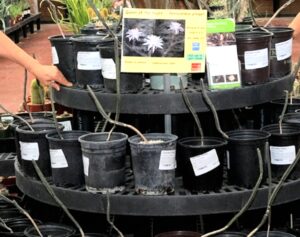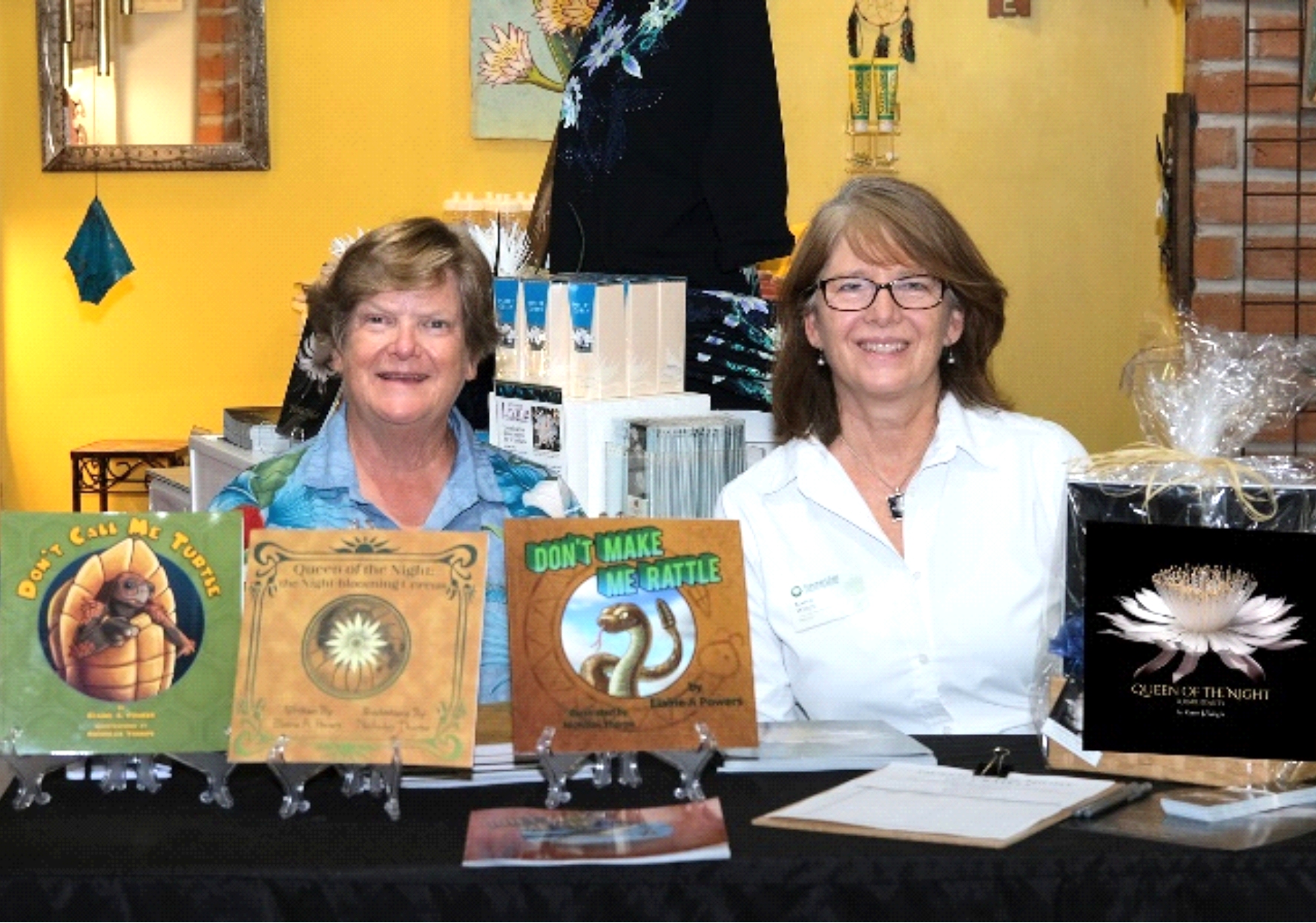The Night-blooming Cereus had to bloom all alone in the summer of 2020, but this year, they opened in all their glory for the visitors at the Tohono Chul Botanical Gardens on June 30, 2021.
Just prior to the 2019 blooming, I published my book, Queen of the Night: The Night-blooming Cereus. I wrote this book when the folks at Tohono Chul mentioned there were no books specifically for the native Cereus, Peniocereus greggii. After consulting with their expert botanist, I published this rhyming picture book. I was delighted by the public’s reception of the book on Bloom Night 2019.
Shortly after the 2019 blooming, photographer Karen Wright published a book about the Cereus featuring her phenomenal photographs, Queen of the Night: A Rare Beauty. So, with the park being open to members for the 2021 Bloom Night, I suggested that Karen and I do a book signing together.
I am pleased to report that we both had good sales and we made a good team, encouraging people to learn more about and fully embrace this unusual cactus species native to the Sonoran Desert. Most of the year, it looks like a stick, which extends from a large tuber buried in the desert soil. Once a year, at the beginning of the summer monsoon, the cereus plants develop flowers. When all the conditions are just right, all the flowers across the area, bloom on the same night – for only one night! Their fragrance summons the pollinating moths and bats before the flowers all die with the morning sun.

A very brief but spectacular shared life!
REVIEW ARIZONA DAILY STAR
Queen of the Night:
The Night-Blooming Cereus
$14.95
by Elaine A. Powers
Illustrated by Nicholas Thorpe
A perk of Sonoran-desert living is the one-night-only appearance of the Night-Blooming Cereus, a much-anticipated summer event for Tucsonans who rely on predictions from experts to know precisely when the tiny window of opportunity will open on the floral extravaganza. How in the world do the experts know? And what causes a cactus to behave this way?
With this picture book, Elaine Powers demystifies the mysterious bloom, explaining – in rhyming couplets no less – the life cycle of the plant, how to predict its flowering (when the buds reach 170-230 millimeters, stand back!), why they all flower simultaneously, and other bits of botanical lore about this intriguing plant, which spends most of the year looking like an undistinguished stick. Written for children, Powers’ book will charm and edify cactus lovers of any age. Lush illustrations by Nicholas Thorpe are a splendid accompaniment: Look for his very stern javelina on page 12 – he’s delightful.
A former laboratory biologist, Powers, who makes her home in Tucson, now writes science-based children’s books.
– Helene Woodhams is retired from Pima County Public Library, where she was literary arts

